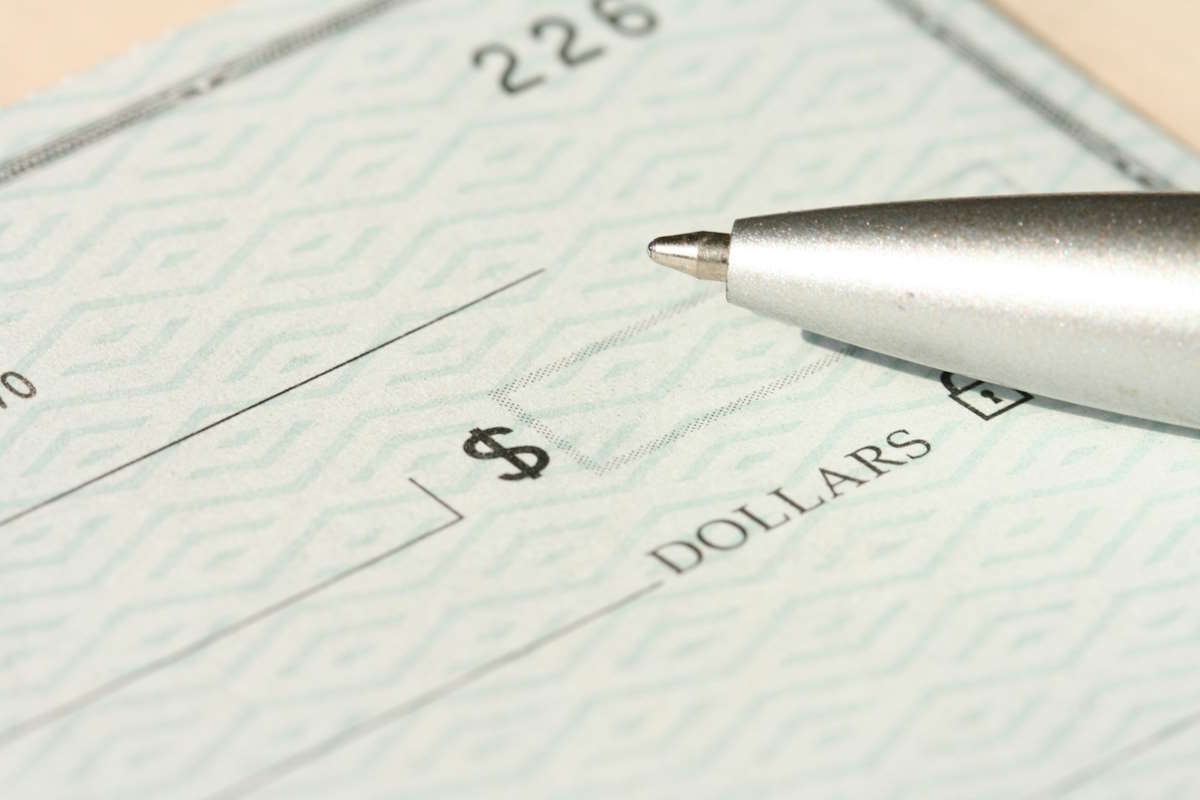Did your new employer just request that you bring a voided check? Or did you stumble upon the word while browsing through a financial blog?
Whatever brought you here, you just came to the right place.

In this article, we will help you know what a voided check is and why it’s still a very useful tool today despite the fact that check usage has been declining as digital banking methods become more popular.
And that’s not all — we’ll even train you how to void your own check and when that’s necessary, as well as the common pitfalls to avoid when doing that.
In other words, we have all the lowdowns you need about voided checks, so walk along with us.
What is a Voided Check?
A voided check is a paper check with the word “VOID” written across it. Did you get that?
It’s just like the regular check, only that the word “VOID” appears across it in big letters to make it precisely what the name says — void!
Checks are becoming less popular. In fact, as per the report published by Walden University, every year sees 1.8 billion fewer checks written than the preceding year. The report proceeds to predict that by 2026, paper checks will likely become extinct.
On the contrary, the demand for voided checks seems to be on the rise. The reason? It all lies in the purpose and the benefits of having one. We’ll address the former shortly, and you can check out the advantages of a voided check. But for now, let’s see how you create one.
How to Void a Check Properly
In case your employer or any other institution requests a voided check, you’ll need to provide one. So, how do you create one?
You don’t need to contact your bank to request one. You can do it all yourself, and your bank won’t even have to know — and it’s a straightforward process!
To void a check, just get a personal check from your checkbook and write the word “VOID” in large letters across its entire face using a blue or black pen. Ensure that the writing is large and bold enough to be seen.
Also, ensure that the word doesn’t cover essential details written at the bottom of the check, and we’ll tell you why.
Alternatively, you can write the word “VOID” in any of these areas:
- Date line
- Payee line
- Amount box
- Amount line
- Signature line
As long as the word “VOID” is clearly visible on any of these areas on the check, it ceases to be eligible for cashing or deposit. That’s it—your check is now voided!

Where Do You Need A Voided Check?
Now that you understand how to void a check, let’s examine circumstances that may necessitate it.
To begin, a voided check, although it may create the impression of being unuseful, is handy.
Let’s look at some of the scenarios when it’s needed:
Setting Up Direct Deposit
When joining a new company, you often need to provide your bank details. Nowadays, most employers opt to send their employees’ paychecks directly to their bank accounts, the payment method we’re referring to as direct deposit.
This method eliminates the traditional way of doing things, where one has to physically collect paychecks, deposit them into their bank, and wait for the check to clear. Instead, with a direct deposit set up, you receive your money as soon as your employer releases it.
Now, to facilitate this process, your employer will need your banking details. You could provide them manually in writing, but this comes with the risk of error while transferring the numbers onto paper, exposing you to the likelihood of losing your pay altogether!
This is where the need to void a check for direct deposits comes in. Your employer will use the check you’ve voided to get all the bank account information they need: your bank name, account and routing numbers. This eliminates the risk of error while writing, which is why we said the writing on it shouldn’t cover these details.
Regular Bill & Automated Loan Payments
Another area where you might need to use voided checks is when you want to set up automatic bill payments or loan payments. Providing a voided check authorizes the pertinent company, service provider, or financial institution to automatically deduct funds from your bank account when they are due, making bill payment easy and convenient.
Cover Up A Mistake
Perhaps you were drafting a check and just noticed that you wrote more zeros than you intended. This error can be very costly, especially when the person reading the check misinterprets the correction.
Again, you don’t want to discard the check because anyone who collects it might use it to get money from your account. In such a scenario, you may need to void the check. Voiding the check helps prevent this risk.
Linking Bank Accounts
If you’re trying to link two bank accounts, say your savings account, with your checking account, then you might be required to provide a void check, especially when dealing with online banks or credit unions.
This check will eliminate the need to write down all the bank details as you set up the account. You just have to attach a voided check, and you can get started with your online transactions.

Common Mistakes When Voiding a Check
As seen, voiding a check is a straightforward task. But are you more likely to make a mistake when creating one?
That’s right!
Here are some common mistakes to avoid when voiding a check:
- Using a pencil: Unlike pen, a pencil is easily erasable, so avoid using it when voiding a check.
- Covering over essential details on the check: This renders the whole idea of voiding the check useless, as we more often void it to provide these details.
- Voiding the wrong check: It might look unlikely, but there have been several cases where people wrote “VOID” on the wrong check. Always double-check when voiding a check to eliminate this costly mistake.
- Using the wrong type of pen: If your pen isn’t bold enough, the word “VOID” might not be clear and visible on the check. Always use a pen that is easy to read.
- Issuing blank checks instead: Voided and blank checks aren’t the same. The latter can easily be filled out and used to withdraw money from your account, making it a risky approach.
- Issuing Voided checks indiscriminately: As much as it’s voided, a voided check still contains sensitive information like your bank account number, check number, and routing number. Hence, only issue void checks to trustworthy institutions and not just to anyone who requests it. This trap is more common online, where thieves might request a voided check masquerading as legitimate companies or service providers.
Alternatives To Checks
Issuing voided checks is usually the easiest and most convenient way to share your bank information with the right persons with zero risks of committing errors. However, not all of us have checkbooks, and some of us who have them just don’t want to sacrifice a check.
Now, in case you fall under the former category, in that you don’t have a checkbook in the first place, you can walk into your bank or credit union and ask for a voided check from the teller. They will print one for you. Alternatively, you can even print your own checks from home!
However, if you have the checkbook but don’t feel like sacrificing a check, we still have other alternatives you can explore, such as:
- Photocopy: You can photocopy a check and use the photocopy instead.
- A direct deposit authorization form: Where an employer requests a voided check to set up direct deposit, you can instead use the direct deposit authorization form. There, enter all the needed details. Just ensure to check whether you’ve copied everything correctly before submitting the form.
- Online banking portals: Most banks now have online banking portals. See if your bank allows you to print your bank account details or securely share them with third parties.
- Bank statements: If you require a voided check and don’t have a checkbook but have some bank statements instead, they can suffice. This, however, means that you may need to expose more personal information than is necessary.
Conclusion
As we’ve seen, voided checks aren’t difficult to create or use. They come in handy on numerous occasions and are convenient, secure, and time-saving. But then, when creating one, you have to be careful not to make some of the common mistakes people make. As long as you’re keen on that, a voided check is safe and one of the most useful tools.
Still, you can use alternative methods to share your bank information, such as online banking portals and photocopied checks. Where needed by the employer, you can also opt to input the information manually on the direct deposit authorization form.